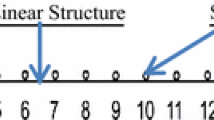Abstract
Collection of information for management in logistics is of great importance today. Many applications in logistics are currently starting to use modern technologies such as RFID. However, these technologies have not provided enough information for management such as the real-time condition of goods or online item tracking during transport. In this paper, a model for Wireless Sensor Networks (WSNs) in logistics is proposed under the consideration of mobility and multiple WSN domains. With the use of WSNs, relevant information can be monitored down to the level of individual logistic items. For the communication reliability of sensor networks, a high packet reception ratio (PRR) is desired. To achieve this high PRR, many techniques are used in our model to conserve energy and to improve the reliability. The results show that a PRR of 90% can be reached in our simulation scenarios using the proposed model. Moreover, a logistic scenario in a harbor is examined as an example to investigate the capability to connect automatically in multiple sensor networks.
Access this chapter
Tax calculation will be finalised at checkout
Purchases are for personal use only
Similar content being viewed by others
References
E. D. Demaine, A. Lopez-Ortiz, J.I.Munro (2002): Frequency estimation of internet packet streams with limited space. In Proceedings of the 10th Annual European Symposium on Algorithms ESA 2002, pages 348–360, September 2002.
L. Evers, M. J. J. Bijl, M. Marin-Perianu, R. Marin-Perianu, P. J. M. Havinga (2005): Wireless Sensor Networks and Beyond: A Case Study on Transport and Logistics, page 1, IWWAN 2005, International Workshop on Wireless Ad-hoc Networks, London.
R. Fonseca, O. Gnawali, K. Jamieson, P. Levis (2007): Four Bit Wireless Link Estimation, page 1. In Proceedings of the Sixth Workshop on Hot Topics in Networks, 2007.
Hans-Christian Müller—Wireless Networks in Logistic Systems (2005): Workshop on RFID and Wireless Networks in Logistic systems—November 16th, Duisburg, 2005.
C. Intanagonwiwat, R. Govindan, and D. Estrin (2000): Directed Diffusion: A Scalable and Robust Communication Paradigm for Sensor Networks. Sixth Annual International Conference on Mobile Computing and Network-ing (MobiCom), 2000.
Kannan Srinivasan, Philip Levis (2006) RSSI is Under Appreciated. In Proceedings of the Third Workshop on Embedded Networked Sensors (EmNets 2006).
P. Levis, N. Lee, M. Welsh, D. Culler (2003): TOSSIM: Accurate and Scalable Simulation of Entire TinyOS Applications. In Proceedings of the First ACM Conference on Embedded Networked Sensor Systems (SenSys 2003).
P. Levis, E. Brewer, D. Culler, D. Gay, A. sWoo et al. (2008): The Emergence of a Networking Primitive in Wireless Sensor Networks. In Communications of the ACM, Volume 51, Issue 7, page-99-106, July 2008.
T. Rusak, P. Levis (2008): Investigating a Physically-Based Signal Power Model for Robust Wireless Link Simulation. In Proceedings of the 11th ACM International Conference on Modeling, Analysis and Simulation of Wireless and Mobile Systems (MSWiM), 2008.
A. Timm-Giel, K. Kuladinithi, M. Becker, C. Görg (2006): Wireless Sensor Networks in Wearable and Logistic Application—CRUISE Workshop, page 2, June, 2006, Greece.
B.-L. Wenning, A. Lukosius, A. Timm-Giel, C. Görg, S. Tomic (2008): Opportunistic Distance-Aware Routing in Multi-Sink Mobile Wireless Sensor Networks. ICT-MobileSummit 2008, Stockholm.
A. Woo, T. Tong, D. Culler (2003): Taming the Underlying Challenges of Multihop Routing in Sensor Networks. First ACM Conference on Embedded Networked Sensor Systems, 2003.
Collection Tree Protocol—TEP123, www.tinyos.net/tinyos-2.x/doc/html/tep123.html
message_t - TEP111, www.tinyos.net/tinyos-2.x/doc/html/tep111.html
Acknowledgments
This research is partially funded by the German Research Foundation (DFG) within the Collaborative Research Centre 637 “Autonomous Cooperating Logistic Processes: A Paradigm Shift and its Limitations” (SFB 637) at the University of Bremen, Germany.
Author information
Authors and Affiliations
Corresponding author
Editor information
Editors and Affiliations
Rights and permissions
Copyright information
© 2011 Springer -Verlag Berlin Heidelberg
About this paper
Cite this paper
Son, V.Q., Wenning, BL., Timm-Giel, A., Görg, C. (2011). A Model of Wireless Sensor Networks Using Opportunistic Routing in Logistic Harbor Scenarios. In: Kreowski, HJ., Scholz-Reiter, B., Thoben, KD. (eds) Dynamics in Logistics. Springer, Berlin, Heidelberg. https://doi.org/10.1007/978-3-642-11996-5_44
Download citation
DOI: https://doi.org/10.1007/978-3-642-11996-5_44
Published:
Publisher Name: Springer, Berlin, Heidelberg
Print ISBN: 978-3-642-11995-8
Online ISBN: 978-3-642-11996-5
eBook Packages: EngineeringEngineering (R0)




